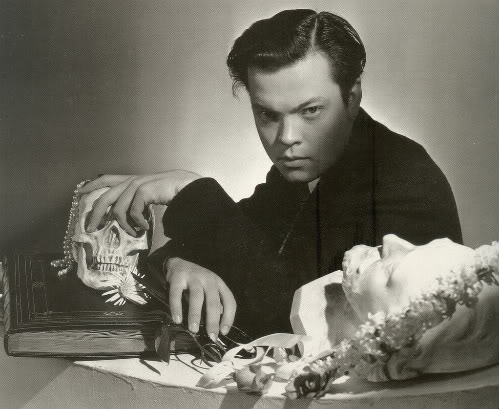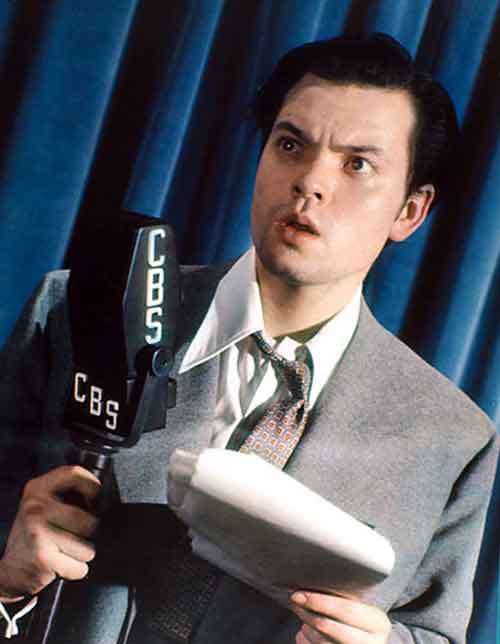The following was put together for Jean-Luc Godard: Documents, a huge, large-format, 448-page (+ DVD) compendium put together by Nicole Brenez (in collaboration with Michael Witt) and published by the Centre Pompidou in 2006. I’ve decided to reproduce this assembly of texts exactly as I submitted it to Nicole. — J.R. [8/23/08] Ten years later, my account of Tregenza’s filmography needs to be updated with a fourth feature, Gavagai (2016). [8/23/18]
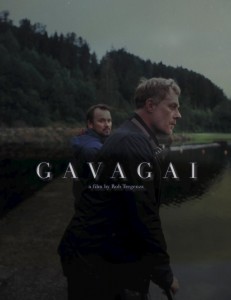
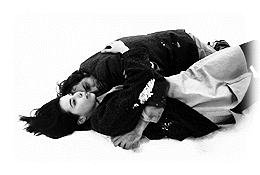


Preface to Five Letters from Godard Apropos of Inside/Out
Not much (i.e., not enough) is known today about the three features of American independent filmmaker Rob Tregenza, all 35 millimeter—-Talking to Strangers (1988), The Arc (1991), and Inside/Out (1997)—- and possibly still less is known about Godard’s activity as a film producer, specifically of the third of these films. It isn’t even alluded to in Colin MacCabe’s detailed biography, where the fact that Godard helped to finance Straub-Huillet’s 1967 Chronik der Anna Magdalena Bach equally goes unmentioned.
It also seems probable that the last film review published by Godard to date is his one of Talking to Strangers (see Jean-Luc Godard par Jean-Luc Godard, tome 2, 1984-1998, pages 355-356, where this text is undated, though it was written specifically for the Toronto Film Festival catalogue and published there in English in September 1996). Read more
This is the first article I ever wrote for Stop Smiling — their “auteur issue” (no. 23) in 2005. Like virtually all Welles reporting, this is of course drastically out of date, but often in a good way; it’s delightful to see how much more of his work has become available over the past 17 years. — J.R.
If Orson Welles were still alive, he would have turned 90 last May 6th. Chances are, no matter what he did in his final years, a certain number of people would still be griping that he never lived up to his promise. But I
wouldn’t be one of them.
This Midwestern whiz kid, a master of radio, theater, and film, terrorized the populace when he was 23 with a mockumentary radio adaptation of The War of the Worlds that was taken for real. At 25 he scandalized Hollywood with a first feature called Citizen Kane that ridiculed newspaper tycoon William Randolph Hearst. Welles was clearly expected to cause a sensation regardless of what he did after this. But to manage that, he would have needed continued public visibility, which Welles rarely had after those two early peaks. And in fact he was after more than sensation.
Read more
Posted by DVD Beaver in October 2007; I’ve updated many of the links. — J.R.
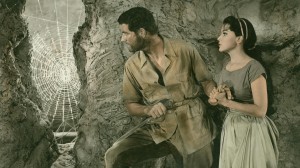
As with science fiction, the focus of my previous article in this series, the definition of what constitutes a fantasy film is to some extent arbitrary. Not every account of The Tiger of Eschnapur would situate it within the realm of fantasy, though I’d argue that a sequence involving a spider’s web that’s woven in the entrance to a cave, and perhaps other details as well, warrant such a description. The some goes for Confessions of an Opium Eater and its sudden shifts into slow-motion; these are nominally justified as opium-induced perceptions, but when the hero suddenly falls from a building and does several rapid cartwheels in midair, it’s impossible to tell at which point the logic of dreams takes over. In other respects, accepting Eyes Wide Shut as a fantasy is more a matter of interpretation than a matter of pointing at any obvious genre elements. And of course the realm of horror, which overlaps with fantasy without necessarily becoming fantasy (as in the cases of The Seventh Victim, Psycho, and Peeping Tom, for instance), accounts for at least four of my selections—Vampyr, Night of the Demon, The Masque of the Red Death, and Martin. Read more
From the Chicago Reader (May 1, 1990). — J.R.

Though crippled by studio recutting that tried to adjust this neurotic 1962 melodrama for the family market, Vincente Minnelli’s adaptation of Irwin Shaw’s novel is one of his last great pictures, reversing the Henry James model of innocent Americans encountering corruption abroad — it’s the Americans who are decadent here. Intelligently scripted by Charles Schnee, the film reunites the director, writer, producer (John Houseman), star (Kirk Douglas), and composer (David Raksin) of The Bad and the Beautiful, describing the attempted comeback of an alcoholic ex-star (Douglas), asked to help a director friend (Edward G. Robinson) with a new picture in Rome, who encounters both his destructive ex-wife (Cyd Charisse) and a redemptive young Italian woman (Daliah Lavi) in the process. George Hamilton plays a spoiled young actor who falls under Douglas’s tutelage, and Claire Trevor plays Robinson’s wife. The costumes, decor, and ‘Scope compositions show Minnelli at his most expressive, and the gaudy intensity — as well as the inside detail about the movie business — makes this compulsively watchable. 107 min. (JR)
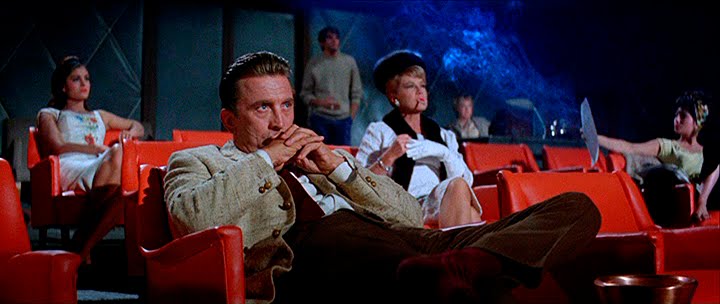 Read more
Read more
Written for the Busan International Film Festival’s Korean Film retrospective catalogue, Fly High, Run Far: The Making of Korean Master IM Kwon-taek, Fall 2013. — J.R.
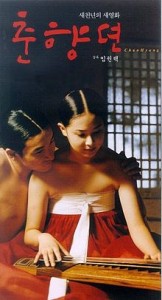
Preface
I can’t pretend to be familiar with Korean history in general and traditional Korean music in particular. But rather than attempt to disguise my ignorance with a handful of facts gleaned from superficial research, I prefer to approach Chunhyang (2000, 136 min.) in broader, more generalized, and less historical terms as a film confronting issues of representation relating to live performance as well as cinema, and the survival of relatively ancient forms of music and performance in the present.These are the issues that have drawn me to Chunhyang in the first place, despite an overall ignorance about Korean culture that extends to most of its cinema — including even most of the oeuvre of its most celebrated auteur, Im Kwon-taek.
I hope that this admission of my lack of knowledge and innocence can be regarded as a form of clarification and honesty rather than as an expression of arrogance. My theoretical assumption is that the most common form of journalistic bluff regarding such matters — conveying an unearned and unwarranted stance of authority, typically justified through a series of lazy intellectual shortcuts and/or appropriations (such as, for example, describing pansori as some Korean variant of the American blues) — is ultimately more imperialistic in effect than any honest admission of cultural ignorance. Read more
From the Chicago Reader (October 11, 2002, and then again on June 24, 2005, when Roger introduced it and led a discussion about it). Happily, this film is still available from Amazon and on YouTube, and in memory, it seems to get better and better all the time. — J.R.
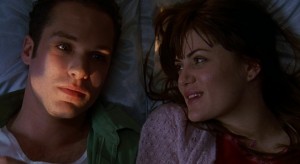
There are so many curves and anomalies in this unpredictable low-budget independent feature (2001) by Chicago actor Michael Gilio that I’m tempted to call it an experimental film masquerading as something more conventional. If it’s a comedy — and I’m not sure it is — there are far too many close-ups, though this is also very much an actors’ film. If it’s a road film — and I’m not sure it is — it never gets very far on any given route, though that’s surely deliberate. Two characters (played by Gilio and Bullet on a Wire‘s Lara Phillips) are opaque — they meet at a convenience store where she’s shoplifting, then go on a cross-country trip toward LA, until things start to get weird — and two (played by Karin Anglin and the charismatic Rich Komenich) have backstories. This movie is about the interactions between these characters, and though I’m still trying to figure out what all the pieces mean, there’s no way I can shake off the experience. Read more
From the February 24, 2oo6 Chicago Reader. — J.R.
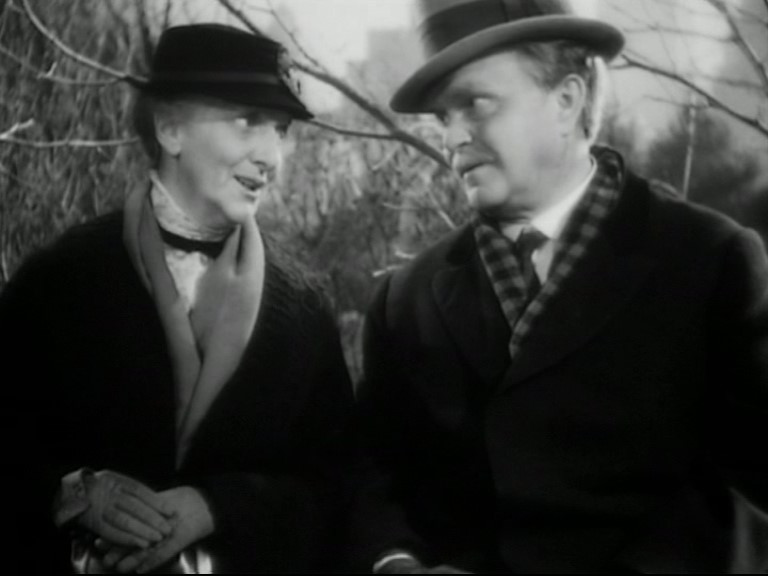
With the possible exception of Yasujiro Ozu’s Tokyo Story, this 1937 drama by Leo McCarey is the greatest movie ever made about the plight of the elderly. (It flopped at the box office, but when McCarey accepted an Oscar for The Awful Truth, released the same year, he rightly pointed out that he was getting it for the wrong picture.) Victor Moore and Beulah Bondi play a devoted old couple who find they can’t stay together because of financial difficulties; their interactions with their grown children are only part of what makes this movie so subtle and well observed. Adapted by Vina Delmar from Josephine Lawrence’s novel Years Are So Long, it’s a profoundly moving love story and a devastating portrait of how society works, and you’re likely to be deeply marked by it. Hollywood movies don’t get much better than this. With Thomas Mitchell, Fay Bainter, and Porter Hall. 91 min. 16mm. Also on the program: McCarey’s silent comedy short Be Your Age (1926), with Charley Chase. Sat 2/25, 8 PM, LaSalle Bank Cinema.
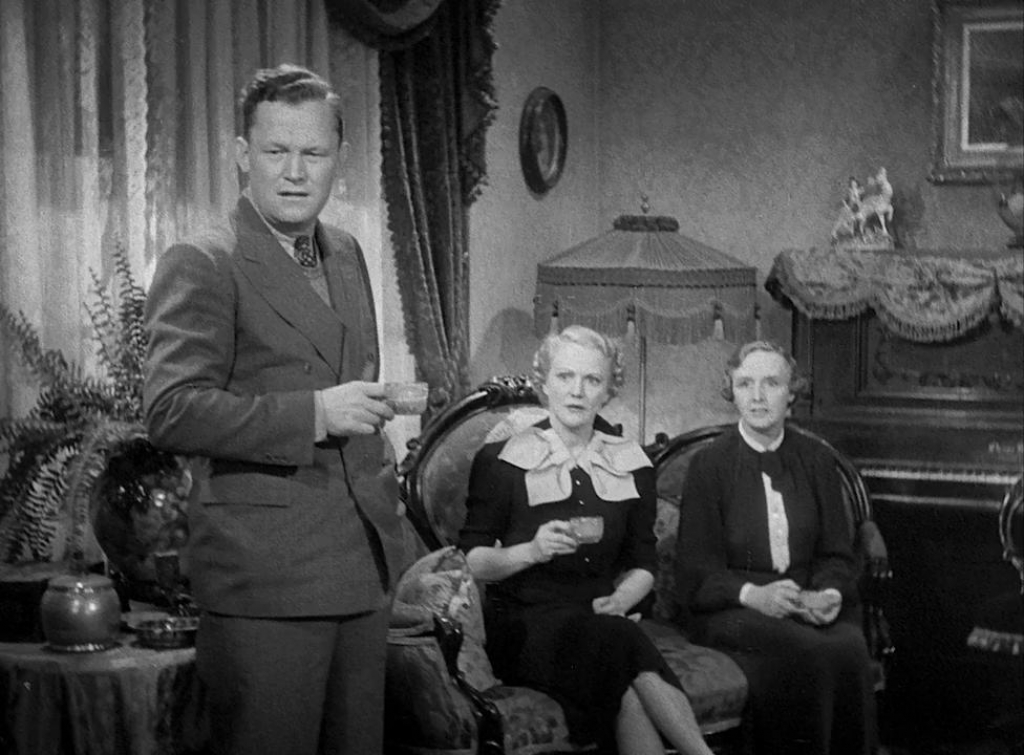 Read more
Read more
The following was commissioned in 1999 by Written By, the magazine of the Writers Guild, which decided not to run it because Brooks’s agent refused to let me see The Muse in advance for this article unless a “cover story” was promised. Written By, to its credit, refuses to make deals of this kind. So the magazine paid me for the article and didn’t run it, which I hope made Brooks’s agent properly proud of his efforts. — J.R.
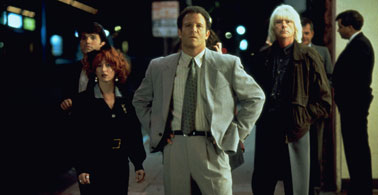
You may recall him as the wealthy convict in Out of Sight, or, prior to that, as Cybill Shepherd’s wisecracking cohort at the campaign headquarters in Taxi Driver, as Holly Hunter’s best friend in Broadcast News, or as the neurotic Hollywood producer in I’ll Do Anything. Maybe, if you’re luckier, you’ve seen his five underrated and highly durable comedies — Real Life (1979), Modern Romance (1981), Lost in America (1985), Defending Your Life (1991), and Mother (1996) — which will be succeeded later this year by The Muse.
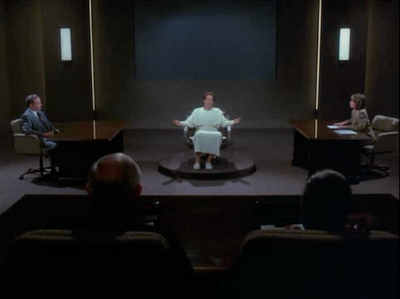
Albert Brooks has so far taken solo writing credit only on Defending Your Life — sharing script credit with TV comedy writer Monica Johnson on the other four (as well as on The Scout, a disappointing 1994 baseball movie he didn’t direct), and also with Harry Shearer on Real Life, the first and probably the funniest of the lot. Read more
From the Chicago Reader (April 30, 2004). — J.R.

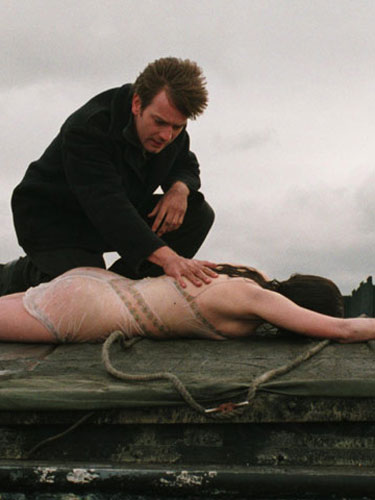
David Mackenzie’s compelling and authoritative adaptation of Alexander Trocchi’s 1953 novel revolves around a nihilistic bargeman (perfectly embodied by Ewan McGregor) who works the canals between Edinburgh and Glasgow and spends all his free time reading and screwing (often adulterously). This emotional detachment is often treated as an existential position, so the story occasionally suggests a beat version of Camus’ The Stranger, with the images’ sensual and erotic power often superseding any literal meaning. Despite the flashback structure, this is a film in which mood matters more than plot, while the hero’s heroic stature steadily shrinks. All in all, a very impressive second feature. With Tilda Swinton (The Deep End), Peter Mullan (My Name Is Joe), and Emily Mortimer. NC-17, 93 min. Century 12 and CineArts 6, Pipers Alley.
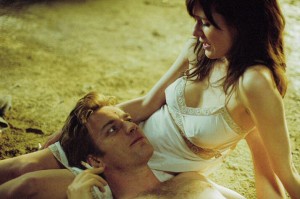 Read more
Read more
From the Chicago Reader (January 7, 2005). — J.R.
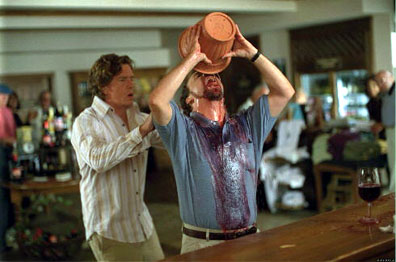
Ten film critics’ polls in Chicago, Boston, Los Angeles, New York, San Francisco, Toronto, and Washington, D.C., have named Sideways the best movie of the year. I don’t know whether to laugh or cry.
It’s not that I have anything against comedies; last year Down With Love was second on my ten-best list. Besides, Sideways has a dark side — its infantile hero (Paul Giamatti) steals from his mother, and his infantile sidekick (Thomas Haden Church), who’s about to be married, compulsively cheats on his fiancee. They behave as if the world beyond southern California doesn’t exist, but the movie doesn’t seem to realize it. And like most American mainstream movies, it dances around class issues without ever facing them.
If my colleagues who love this movie, many of whom I admire, are implying that it contains valuable life lessons, I wish they’d tell me what they are. Giamatti is an acerbic loser hero who’s eventually given a ray of hope, like the Woody Allen hero of 20 or 30 years ago but without the wisecracks. So is regressing to that moviemaking model the proudest achievement of world cinema in 2004? Did the critics find something comforting, even affirmative, about its provincialism? Read more
From the Chicago Reader (December 3, 1999). — J.R.

El Valley Centro
Rating ** Worth seeing
Directed by James Benning.
El Valley Centro, James Benning’s latest feature, is a fairly minimalist effort consisting of 35 shots, each of them two and a half minutes long, filmed in direct sound with a stationary camera in California’s Central Valley. About halfway through I found myself, to my surprise, thinking about Joseph Cornell’s boxes, those surrealist constructions teeming with fantasy and magic — dreamlike enclosures that make it seem appropriate that Cornell lived most of his life on a street in Queens called Utopia Parkway.
Benning’s films are typically about farmland, deserts, or industrial landscapes. The two features preceding this one are Four Corners, shot around the point where New Mexico, Arizona, Colorado, and Utah meet, and Utopia, shot in desert country starting in Death Valley and heading south across the Mexican border. Benning hails from Wisconsin, and most of his early films are made up of midwestern landscapes. He moved to the west coast several years ago to teach at Cal Arts, and ever since he’s been shooting various kinds of midwesternlike emptiness and decay in the western states. Two years ago he started offering free December screenings of his new films at a private loft in Wicker Park, when he was back for the holidays, and apart from screenings at Cal Arts, these have been the films’ American premieres. Read more
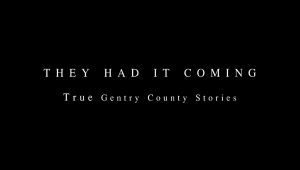
Now that I’ve seen three of the most recent half-dozen features of Jon Jost — Coming to Terms (2013, Butte, Montana), Blue Strait (2014, Port Angeles, Washington), and They Had it Coming: True Gentry County Stories (2015, Stanberry, Missouri), in that order — I find myself, unlike certain others (including Jost himself), preferring the third to the second and the second to the first. The reason why is that the basic theme of Jost’s narrative films for quite some time has been the tragic story of American men, some of them patriarchal, others simply burnt-out cases, losing their all-American souls — a theme that to my mind he already gave near-perfect expression to in his 1977 Last Chants for a Slow Dance (dead end) and which he has been spinning out periodically in diverse variations ever since. But to judge from the developments between these three recent features, this may be a story that Jost may finally be turning away from — for the sake of non-narrative meditations (especially in much of Blue Strait) and the stories of others (as in They Had it Coming), others whom in some cases may not even have discernible souls to lose. And for me, these are positive developments for a prodigious independent artist whose productivity is so difficult to chart that his eight separate blogs and two separate web sites make it even harder to track in its various forms and dispersals. Read more
Written for the Second Run DVD of Pedro Costa’s Casa de Lava, released in the U.K. in 2012, and developed from separate articles in the Chicago Reader, November 15, 2007, and the Portuguese collection cem mil cigarros: OS FILMES DE PEDRO COSTA, edited by Ricardo Matos Cabo, Lisboa: Orfeu Negro, 2009. — J.R.
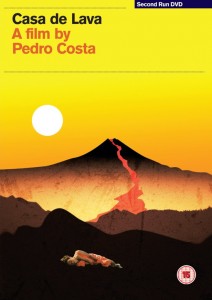
The cinema of Pedro Costa is populated not so much by characters in the literary sense as by raw, human essences — souls, if you will. This is a trait he shares with other masters of portraiture, including Robert Bresson, Charlie Chaplin, Jacques Demy, Alexander Dovzhenko, Carl Dreyer, Kenji Mizoguchi, Yasujiro Ozu, and Jacques Tourneur. It’s not a religious predilection but rather a humanist, spiritual, and aesthetic tendency. What carries these mysterious souls, and us along with them, isn’t stories — though untold or partially told stories pervade all of Costa’s features. It’s fully realized moments, secular epiphanies.
Born in Lisbon in 1959, Costa grew up, by his own account, without much of a family. Speaking about O sangue, his first feature, he admitted that there was a personal aspect in his concentration on the incomplete family in that film “because I never really had a family. Read more
From the Chicago Reader (April 16, 2004). As much as I share my colleagues’ admiration [in 2012] for Jafar Panahi’s This is Not a Film, I must confess that I find it both depressing and somewhat insulting to Panahi that this is receiving more attention and praise in some quarters than his full-fledged films ever did, including such masterpieces as The White Balloon, The Circle, and Crimson Gold (not to mention Panahi’s more inventive and fruitful 2013 Closed Curtain, made under the same constraints as This is Not a Film). Which is why it seems worth reviving my review of the latter film. — J.R.
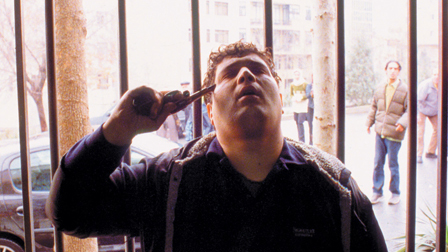
Crimson Gold **** (Masterpiece) Directed by Jafar Panahi Written by Abbas Kiarostami With Hussein Emadeddin, Kamyar Sheissi, Azita Rayeji, Shahram Vaziri, Ehsan Amani, and Pourang Nakhayi.

“War President” is an image. It is not a textual statement or rhetorical argument. An image is like an empty room and any message that one reads in that room necessarily came in the baggage one carried when one walked in the door. If I made an image of George Washington composed of images of the American dead from the revolution, would viewers likely take that image as an indictment of Washington? Read more
From the online Screening the Past, issue 36, posted 17 June 2013. — J.R.
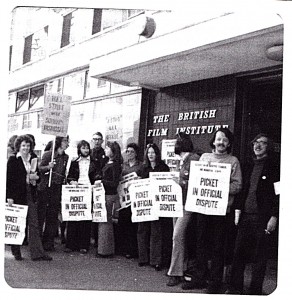
Geoffrey Nowell-Smith and Christophe Dupin (ed.)
The British Film Institute, the Government and Film Culture, 1933-2000
Manchester/New York: Manchester University Press, 2012
ISBN: 978 0 7190 7908 5
US$95/UK£65
288pp (hc)
(Review copy supplied by Footprint Books/Warriewood)
The most interesting job I’ve ever had was my two and a half years of working for the British Film Institute, between 1974 and 1977 –- as both assistant editor of the Monthly Film Bulletin (under Richard Combs) and staff writer for Sight and Sound (under Penelope Houston, who was directly responsible for my getting hired), occasioning at the time a move from Paris to London. This is what sparked my particular interest in this impressively detailed history, coedited and mostly written (apart from four of its 15 chapters) by the University of London’s Geoffrey Nowell-Smith and the International Federation of Film Archives’ Christophe Dupin after more than six years of research — and the fact that it retails for $95 at Amazon in the U.S. and 65 quid at Amazon in the U.K. meant that the only reasonable way I could acquire it was to ask to review it. Read more





